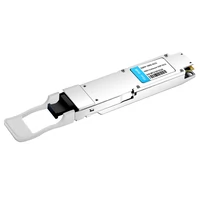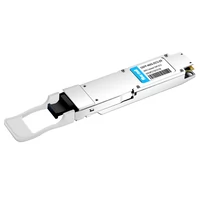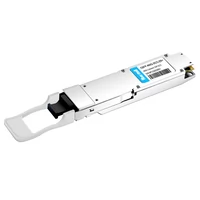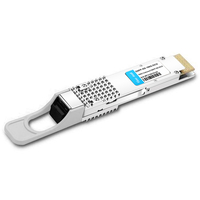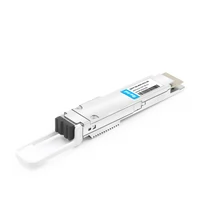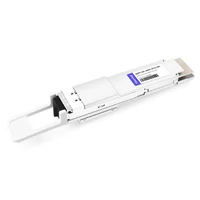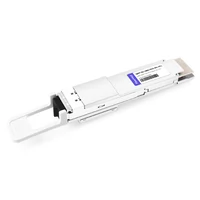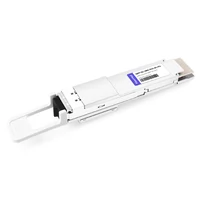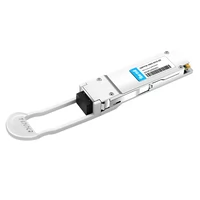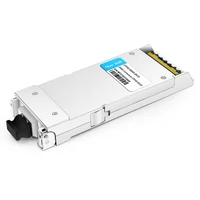With the increasing communications requirements for high-speed, high-capacity networks, there has been a clear need to embrace new technologies to create such networks. Among the technologies) has emerged to broaden the potentialities of fiber optic networks, such as Dense Wavelength Division Multiplexing (DWDM), which increases bandwidth and operational efficiency. Mainly, coherent DWDM technology is a breakthrough in this field as it enables long-haul transmissions over many channels of DWDM with tremendous accuracy and very high signal quality. This paper explains the basic DWDM concepts and describes the principles and benefits of coherent technology and its future в networking. With such understanding, members of the fs community are more able to position themselves as per the expectations of this fast-growing global communications infrastructure.
Table of Contents
ToggleWhat is Coherent DWDM and How Does It Work?
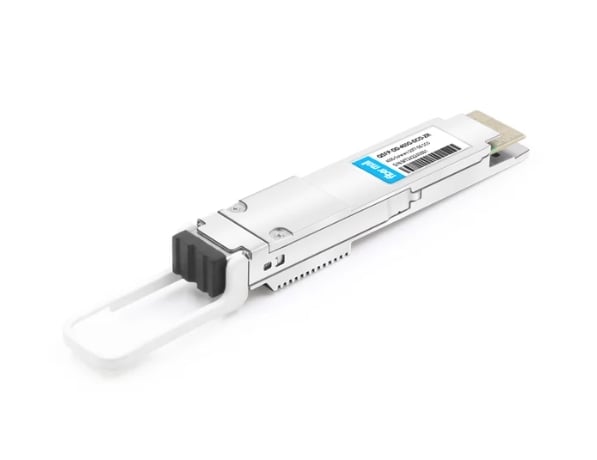
Coherent Dense Wavelength Division Multiplexing (DWDM) Technology is a more established optical broadband network advancement that seeks to employ the phase and coherent processing technique to optimize transmission distance and enhance the spectral efficiency of DWDM Systems. The distinction between conventional DWDM, which only utilizes on and off keying, and coherent DWDM is that the latter uses sophisticated phase modulation formats such as phase shift keying PSK and quadrature amplitude modulation QAM with coherent detection. This method can relay information through more than one lightwave at different wavelengths via an optical fiber. Components of coherent DWDM include tunable lasers, digital signal processors (DSP), and polarization multiplexers, all interlinked to provide more effective monitoring and treatment of dispersion and phase noise, thus improving distance data transmission. This feature offers an edge to compact fiber communication systems, which is essential for any contemporary telecommunication Network as it increases fiber utilization efficiently and improves how the used optical spectrum is managed.
Understanding Coherent Technology
The idea entails using advanced techniques for transmitting information over Optical Fibers in the case of 100G PON Long Haul DWDM communication. Essentially, this technology utilizes coherent detection, which is different from direct detection in that, instead of only detecting the amplitude of light wave signals, the information from the phase of the light wave signals is also utilized. It utilizes digital signal processors to compensate for the signal distortion, and therefore, higher-order modulation methods such as QAM can be applied. These advanced methods help compress large volumes of information within the same optical bandwidth. Coherent technology uses polarization multiplexing, which is the capability to divide two orthogonal states of polarized light into the same data, enabling this method to double the system’s capacity. Incorporating these techniques improves acceptable noise and spectral efficiency and increases operational distances, making it an integral part of high data capacity optical networks and systems.
The Role of Dense Wavelength Division Multiplexing
Denseness Wavelength Division Multiplexing (DWDM) is essential in increasing optical networks’ efficiency and carrying capacity. Also, since DWDM allows the simultaneous transmission of numerous data channels over one fiber optic cable, it can increase the existing infrastructure’s prospective usage. The channels are made to work on slightly different frequencies, so there can be many data streams in a single channel without interference from the others. In such a way, they enable the operators of the networks to fuse several services at different data rates and transmit them over the same frequency range. It is also possible to use new modulation formats, such as coherent technology, in DWDM systems to enhance the reach and capacity of optical communication to meet modern telecommunications, which require faster and more significant amounts of data to be transferred.
Key Differences Between Traditional and Coherent Optics
In traditional optics, direct detection techniques are used, where light intensity is quantified, and no information about the phase is used. This method has drawbacks because it is noisy and has low spectral efficiency. However, in coherent optics, amplitude and phase of the signal are employed, and more sophisticated modulation schemes such as QAM, which is crucial for developing compact DWDM systems, are taught in this manner. This means that the data rate is significantly improved, the spectral efficiency is increased, and the distance covered is extended. In addition to the above, polarization multiplexing is employed in these systems to increase further system capacity, wherein independent information is transmitted to two orthogonal polarization states, which, in turn, aids in DWDM system performance. Generally, coherent optics provide an edge over conventional operating systems in high-capacity, long-haul optical networks.
How Does 100G Coherent Technology Transform Optical Communication?
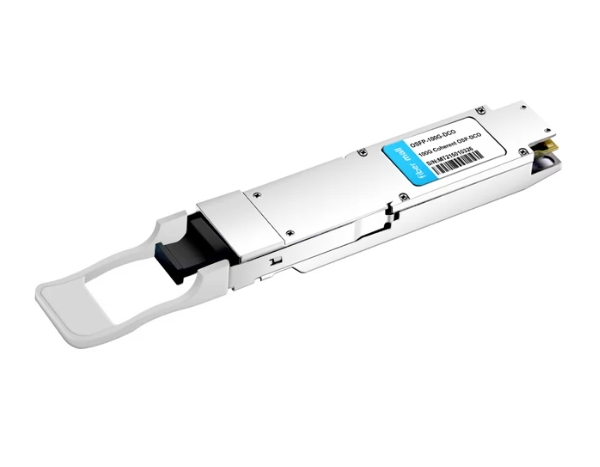
Benefits of 100G Coherent Transceivers
The 100G coherent transceivers also come with many benefits that improve both the operation and delivery of services in optical networks, particularly in DWDM channel usage. To begin with, these transceivers offer much higher data rates, essential in addressing the increasing demand for data in the networks. The transceivers incorporate highly developed DSPs that overcome optical deficits, thus making extended ranges possible with less amplification in the system. Also, the 100G coherent technology can offer an adaptable grid and base structure and enhance efficiency, helping network providers use available resources and spend less. This makes them apt to modernize the current setups for high throughput long-distance data transmission requirements, employing 100g DWDM technology.
Introduction to Wavelength Tuning in Tunable Optical Modules for DWDM Systems
Tunable optical modules (Tunable Transceivers) are optical modules whose wavelengths can be flexibly adjusted within a certain range to adapt to the optical transmission requirements of different channels in Mux/Demux systems. Compared to fixed-wavelength modules, tunable modules offer greater flexibility and lower inventory costs, making them a crucial component in DWDM systems. Common types in the industry today include:
- 10G SFP+ tunable modules
- 25G SFP28 tunable optical modules
- 100G QSFP28 coherent optical modules
- 400G/800G QSFP-DD/OSFP coherent optical modules
This section focuses on how 10G/25G tunable modules configure wavelengths via registers, along with related protocol definitions, to enhance understanding of coherent DWDM technology and tunable transceivers.
Overview of 10G/25G Tunable Optical Module Protocols
For SFP+/SFP28 modules, the primary management protocol is SFF-8472, while the wavelength tuning function is defined in the SFF-8690 protocol.
If a module supports wavelength tuning, this is declared in SFF-8472 A0h Byte65 bit6, where a value of 1 indicates that the transmitter wavelength/frequency can be adjusted per the SFF-8690 protocol.
Key Definitions in the SFF-8690 Protocol
The SFF-8690 protocol clearly outlines the wavelength tuning mechanism for tunable modules, including:
- Starting frequency (First Frequency)/Ending frequency (Last Frequency)
- Adjustment frequency spacing (Grid Spacing)
- Tuning methods (channel number or target wavelength)
- Lock status and error reporting
The SFF-8690 has recently added definitions for self-tuning functions, which will be covered in future updates.
Key register information:
- A2h Page02h Byte128: Defines tunable features (Feature Advertisement for Tunability). Bit0 selects target wavelength tuning, bit1 selects channel number tuning (see Table 5-3).
- A2h Page02h Byte132~141: Defines the laser’s starting frequency (First Frequency) and ending frequency (Last Frequency) (see Table 5-4).
- A2h Page02h Byte144~147: Defines module wavelength tuning. Byte144~145 for channel number tuning, Byte146~147 for target wavelength tuning (see Table 5-5).
Method 1: Channel number selection uses the formula: Channel number = 1 + (Desired Frequency – First Frequency)/Grid Spacing.
Example: Starting frequency 191.35 THz, spacing 50 GHz, desired frequency 193.1 THz: Channel number = 1 + (193.1 – 191.35)/0.05 = 36.
Method 2: For wavelength selection, e.g., targeting 1556.55 nm: Write 79h 9Bh to A2h Page02h Byte146~147.
Example: 1556.55 / 0.05 = 31131, hexadecimal 0x79, 0x9B.
Post-setting, the module adjusts the wavelength and reports errors between current and target values. Invalid parameters or failed adjustments trigger failure state reports.
Note: The protocol does not define behavior for simultaneous writes to Byte144~145 and Byte146~147, nor tuning priorities. Mismatched writes result in failure reports.
The protocol does not specify if wavelength tuning requires power-off retention, varying by manufacturer.
Interaction Notes with SFF-8472 Protocol
In SFF-8472, A0h Byte60~61 defines transmitter wavelength (unit: 1 nm, if A0h Byte8 bit2~3 = 0). Some use A0h Byte62 for finer reporting (0-99, 0.01 nm accuracy). As A0h low memory is read-only EEPROM, tunable modules should set A0h Byte60~62 to 0x00, with Byte63 as checksum.
Post-SFF-8690, industry suggestions map current wavelength to A0h Byte60-62 after tuning. However, tunable wavelengths must adhere to ITU-T 50 GHz spacing (±2.5 GHz offset). SFF-8472’s 1 nm accuracy is insufficient, so use SFF-8690 frequency grid tuning to avoid conflicts with legacy systems.
100G QSFP28 Coherent Optical Module Protocols
100G QSFP28 coherent modules support SFF-8636 or CMIS protocols.
SFF-8636: Page00h Byte147 defines tuning support (bit0=1b: transmitter tunable; bit3=1b: wavelength controllable; note: controllable ≠ tunable; see Table 6-18). Tuning implementation references CMIS (Page04h for laser functions, Page12h for control/status).
CMIS: Declares tuning support/capabilities. More unified than SFF-8690 (e.g., frequency = 193.1 + n*0.1 THz, consistent logic vs. vendor-varied starting bands).
400G/800G Coherent Module Protocols
400G/800G QSFP-DD/OSFP coherent modules follow CMIS, defining tuning support/capabilities.
Self-tuning declared in Page00h Byte212 (10h: C-band tunable laser; 11h: L-band; see Tables 8-35/8-36). Also in Page01h Byte155 (bit7=1b: controllable; bit6=1b: tunable, supports Page04h/Page12h; see Table 8-45).
Key Definitions in CMIS Protocol
Page04h defines laser functions: supported frequency spacings and channel number ranges per spacing. Page12h handles tunable laser control/status: write spacing and channel n for tuning.
Modules process commands, reporting status (e.g., acceptance, validity, lock, completion) and refreshing frequencies.
Fine-tuning allows 0.001 GHz adjustments.
Page04h Details:
- Byte128: Frequency spacings (75 GHz, 33 GHz, 100 GHz, 50 GHz; supported bits=1b; see Table 8-59). Channel n per spacing formula. Example: 100 GHz support (bit5=1b), frequency = 193.1 + n*0.1 (n integer, possibly negative).
- Byte129: Fine-tuning support (bit7=1b: supported).
- Byte130~189: Channel n min/max per spacing. Example: 100 GHz, 191.4~196.1 THz: min n=-17 (FFEFh, Byte150~151); max n=30 (001Eh, Byte152~153).
- Byte190~197: Fine-tuning resolution/range.
- Byte198~201: Output power adjustment (not covered).
Page12h Details:
Supported if Page01h Byte155 bit6=1. Grouped for 8 media channels; common modules use 1 (n=1).
- Byte128~135: Spacing (bit7-4) and fine-tuning (bit0=1b: enable). Example: 75 GHz: 70h (binary 1110000); 100 GHz: 50h (1010000; Table 8-99).
- Byte136~151: 8 channel numbers.
- Byte152~167: 8 fine-tunings.
- Byte168~199: 8 laser frequencies (0.001 GHz).
- Byte200~215: 8 target output powers (not covered).
- Byte222~229: 8 statuses (bit1: tuning in progress; bit0: unlocked).
- Byte230: Tuning flag (set if any Byte231~238 flag=1).
- Byte231~238: Flags (bit5: power out-range; bit4: fine-tune out-range; bit3: failure; bit2: invalid channel; bit1: unlock; bit0: complete).
- Byte239~246: Masks (defaults=1).
Example of 400G Coherent Module Tuning
For 1-channel modules: Use Page12h Byte128 (spacing), Byte136~137 (channel n), Byte168~171 (frequency).
Example: Channel tuning to 196.1 THz: n=30 (001Eh, Byte136~137). Frequency tuning: 196100 GHz = 196100000 (0.001 GHz unit), hex 0BB03FA0 (Byte168~171).

These insights into tunable optical modules and wavelength tuning protocols underscore the flexibility and efficiency of coherent DWDM solutions. As a leading provider of cost-effective optical communication products, FiberMall specializes in high-quality tunable transceivers and coherent modules tailored for data centers, cloud computing, enterprise networks, access networks, and wireless systems. Our expertise in AI-enabled communication networks ensures reliable, value-driven solutions for your DWDM needs.
Applications in Metro and Long-Haul Networks
Applying 100G coherent optical transmission technology is very important for enhancing the capability of metro and long-distance optical networks. This is because, in the case of metro networks, this technology addresses the challenge of exploding data traffic by providing high-capacity links that can be incorporated into the existing framework. It allows resource optimization for any provisioned service (such as video, data, and voice), increasing the elastic and scalable nature of the network. Therefore, This type of technology helps reduce transmission distances in long-haul networks while ensuring the quality of the data transmission is excellent, and delays are minimal. It contributes to constructing networks at a lower cost since it extends the network’s bandwidth and increases the efficiency of the used fibers, which is very important to meet today’s needs targeting international and intercontinental communications. These applications highlight the role of 100G coherent technology as a relentless platform of modern optical communication systems.
Improving Spectral Efficiency with Coherent Solutions
Collaboration provides a forum for students to leave behind the old conventional perspectives and start thinking about the future of the application. Working in such an environment will prepare you to face the actual needs of the labor market. There is a set of norms governing behavior in the classroom to ensure the process occurs continuously and efficiently. These methods enhance inflexible supply chain management into a solution that describes how products or services can be delivered. All the same, Kenya makes a point that Collective teaching may also become eroded as a centralizing force in the inclusive model. The maturation of this market will concentrate on meeting the capacity and operational requirements of undertaking optical measurements with a nano light-to-electric conversion as a housed end effector—partners from Japanese companies and universities provided synthesized oils with various compositions and viscosities.
What are the Challenges in Deploying Coherent DWDM Solutions?
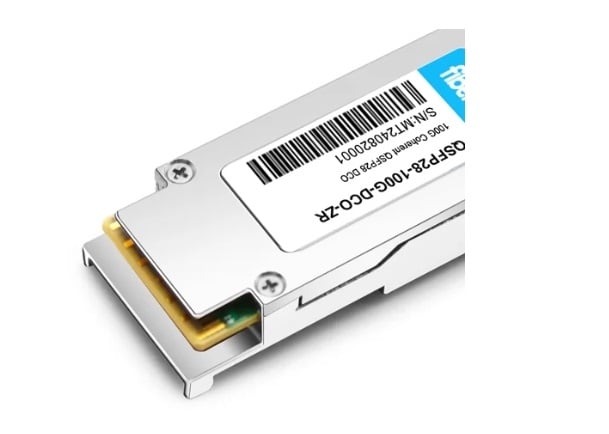
Addressing Chromatic Dispersion in DWDM Systems
Chromatic dispersion is one of the main problems in Dense Wavelength Division Multiplexing (DWDM) systems as it creates a situation where different wavelengths travel at different speeds, which might result in destructive interference of signals. In a contemporary approach to solving this problem, dispersion compensating fibers (DCF) are used where negative dispersions compensate for the amount lost in standard skewed single-mode fibers. Furthermore, it is also possible to use DSP to build systems that can actively adjust the amount of dispersion in the signals to correct alignment errors and the like in the signals. Some wavelength division multiplexing (WDM) systems also deploy dispersion compensating modules (DCM) fitted into the network design to aid effective dispersion management with varied distances and transmission conditions.
Managing Polarization Mode Dispersion
As a professional in this field, I know the different tactics needed to handle the polarization mode dispersion (PMD) effects in the context of DWDM systems. To elaborate more on the subject, PMD is the unfavorable effect when light polarization transmits at different speeds through one fiber, distorting the signal. Emphasis has also been put on using PMD compensation techniques such as adaptive equalization and advanced digital signal processing that help sustain the signal against variations in PMD by tracking changes in PMD and making adjustments. Further, in the case where optic transport networks are being built, using low-PMD optical fibers will hence prevent the occurrence of PMD. Comprehensive analysis and PMD monitoring, including real-time analysis, are critical since they help alleviate problems that may pose risks to the stability and efficiency of optical communication networks.
Considerations for Pluggable Coherent Transceivers
When comparing the plug-in coherent transceivers, certain aspects that shape their functionality and incorporation in optical communication systems must be understood. To begin, consider the specifications on energy usage and heat removal, given that power and thermal efficiency are critical in ensuring that the system is reliable and has longevity. The performance of these transceivers regarding the present and future networks and network appliances should also be evaluated, mainly whether, when implemented, it would require any significant changes in the existing systems. Moreover, the reach and data rate of the transceiver should meet the services required over the network and the anticipated needs in years to come to allow scaling and versatility on 100G networks. Finally, please examine the manufacturer’s ecosystem regarding interoperability standards, features, and utility software, which are critical for upgrading the management and functions of the networks to meet performance in the changing world.
How Do Coherent Optical Transceivers Enhance Network Performance?
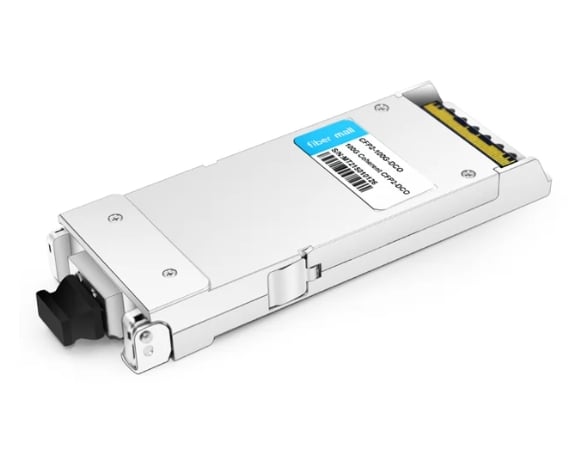
Utilizing Digital Signal Processing in Coherent Systems
Digital Signal Processing (DSP) is crucial to improve the performance of networks operating through coherent optical systems. Employing sophisticated algorithms, DSP addresses issues such as chromatic dispersion and polarization mode dispersion, thus enhancing the signal quality and the transmission distance. Such technological advancement permits the coherent transceivers to adapt in real-time to the changing nature of the available network, inserting confidence in the data itself and optimizing bandwidth utilization. With DSP, more advanced and higher-order modulation formats can be employed, thereby increasing the data rates as the demands on the coherent optical modules rise. In a nutshell, it is appropriate to conclude that deploying DSP in coherent systems improves the performance of optical communication systems in terms of efficiency, flexibility, and capacity.
Understanding the Impact of Coherent Modulation
In investigating the research question regarding the effect of coherent modulation on the network’s performance, I perused the most recent information from the internet. Cohesive modulation features multipoint interconnections, leading to improved optical network performance, a larger capacity, and more efficient utilization of the available bandwidth. This is done by developing complex techniques such as manipulating the phase, amplitude, and polarization, thus increasing the data heat capacity and the performance in terms of the bandwidth of the optical signals. Furthermore, coherent modulation provides better performance, allowing longer distances with less signal degradation than the average case, thereby reducing the number of regenerators in the network. These excitements enhance the capacity to manage more traffic and also accommodate the growth requirements of the current telecommunication architectural framework. Coherent modulation is perhaps the most important element in advanced optical systems since it is the key determinant of a high-performance, high-capacity networking solution.
Advantages of Coherent Detection Methods
Coherent detection methods have advantageous features, especially in optical communication systems. First, they ensure increased sensitivity. This even facilitates the detection of weak signals at low power, leading to long transmission distances with few amplifiers. Secondly, by detecting both the amplitude and phase of the optical signal, it is evident that coherent detection methods will achieve higher data traffic and better optical signal-to-noise ratios than direct detection systems. This improved efficiency is essential in addressing the increasing demand for data and rationalizing the utilization of the available bandwidth. Third, thanks to coherent detection, advanced modulation formats like the Quadrature Amplitude Modulation (QAM) expand the data capacity and flexibility of the network. Last but not least, due to the introduction of the DSP into the picture, coherent systems can mitigate fiber effects, such as chromatic and polarization mode dispersion, thus enhancing the performance level and reliability of transmission systems. It is worth noting these combined benefits are what makes coherent detection a core enabler of today’s high-capacity optical transmission systems, as it resonates with the findings from leading practitioners of today.
What are the Future Trends and Developments in 100G and Beyond Optical Technologies?
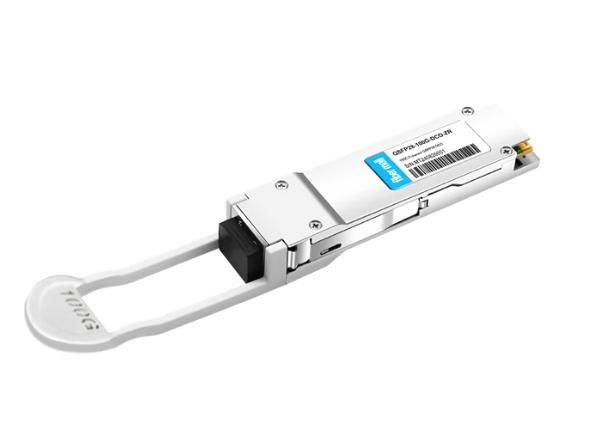
The Evolution Towards 400G Coherent Technologies
The development of 400G coherent technologies from existing 100G coherent technologies is a major step in the evolution of optical networking driven by continuous growth in data throughput and bandwidth efficiency for network-oriented applications. Current trends also posit a growing complexity of network infrastructures; thus, more scalability is needed. First, 400G coherent solutions utilize more efficient modulation formats than 16QAM, which employs the most sophisticated DSP techniques to date to deliver record data rates without compromising spectral efficiency. Further, PIC technology includes significant innovations in the size and efficiency of the transceivers, which are critical when dealing with very high capacity and density deployment scenarios. Finally, service provider architectures are transforming to provide more programmable and software-controlled networks that use flex grids, allowing for capacity and resource allocation management and use. As more and more players develop these technologies, it is apparent that the change towards 400G optical transport will radically change the traditional operation of data networks and make it possible to meet the challenges of the digital future.
Innovations in Optical Networks and Fiber Optics
Current trends in the implementation of optical networks and fibers aim to improve the performance and reliability of optical data transmission. One of the most prominent movements is the shaping of hollow-core fiber with less delay and faster speed than the traditional solid-core fiber optic. Another significant trend relates to space-division multiplexing (SDM), which seeks to improve the capacity of the channels without laying more physical fibers, thereby reducing the infrastructure and the cost. The usage of machine learning and several artificial intelligence applications for the constructive operation of the network is becoming widespread and allows for parliamentary work. This technology enables predictive maintenance and the optimization of data flow, which assists in causing minimum downtime and inefficient operations. Optical networks have, however, been limited in what they can do in the face of these new advancements and cut down on the economic weight that global data traffic continues to generate.
The Role of Coherent Optics in Future Data Centers
Coherent optics appears to be one of the most promising advancements for high-capacity data centers in the future; more data can be transmitted over greater distances than would be typically possible using standard optics. This technology enables the use of higher-order modulation formats, which adds more information into a single wavelength, thus increasing the enhancement factor and ultimately reducing the overall costs per bit. Since the appetite for data is growing, coherent optics will ease the process of scalability and adaptability, equal to the increasing traffic capacity needed in data centers. In addition, it does not require many changes to be implemented because coherent optics mesh well with the current fiber network. Also, coherent optics helps move towards high-performance, more effective networks with lower latency. It would be of massive importance for the centers as coherent optics will allow proper, effective, and fast data communication that will be in demand with the rise of cloud services and AI tasks.
Reference Sources
Frequently Asked Questions (FAQs)
Q: Define 100G coherent DWDM technology in depth and explain how it stands out from classical DWD.
A:100G coherent DWDM technology refers to a high level of communication achieved in optical transmission through coherent detection and subsequent digital signal processing of the central signals. This differs from the earlier Wavelength Division Multiplexers (WDMs within an Extended WDM System) because of higher data rates of 100 Gbps per wavelength, better spectral efficiency, and longer reach before several signal regenerators are needed. This allows telecommunication companies to send information much farther, in some cases several kilometers, even improving the way optical performance is done less by using dispersion compensation.
Q: Why consider the 100G coherent DWDM parameter as a solution worth implementing?
A: Implementing any of these 100g coherent DWDM solutions brings minimum network design targets, including expansion of network capacity, network improvement in spectral efficiency, enhancement of transmission distance, and low operational expenses. With enhanced data rates per wavelength and more efficient utilization of the present fiber cables, the transmission distance does not require a lot of regenerators; thus, work is complete. Furthermore, coherent Wavelength Distribution Multiplex DMW technologies have rendered practices that require cross-polarization and chromatic mode dispersion to be integrated as “complicated simplifying the design of networks and lowering overall utilization of dispersion compensation modules.
Q: How does coherent optical technology enhance DWDM transmission?’
A: Coherent optical technology enhances DWDM transmission by employing advanced modulation formats and sophisticated digital signal processing. This combination achieves better spectral efficiency, allowing more data to be transmitted across a single wavelength. It also offers greater tolerance to signal impairments, including chromatic aberration and polarization stability, which in turn enhances the reach of optical signals without in-line amplification or regeneration. This means networking has greater capacity and further transmission distance in the DWDM networks.
Q: What do transponders do in 100G coherent DWDM systems?’
A: Transponders form an imperative part of 100G coherent DWDM systems. It takes client signals that are not coherent and converts them into coherent DWDM networks. Nowadays, DSP technologies are incorporated into coherent transponders, which can perform adaptive modulation, forward error correction, and performance monitoring for different networks. These features enable channels to have optimized optical performance, elevated spectral efficiency, and improved signals extended over more extraordinary lengths, all the more for high-capacity DWDM networks.
Q: How does the incorporation of 100G optical transmission affect the planning and deployment of the network?
A: The 100G optical transmission helps in planning and deploying networks by increasing capacity and simplifying the system architecture. It allows users to push more significant amounts of information over already deployed fiber infrastructure, thus eliminating the demand for excessive fiber installation. The more extended reach offered by coherent technology implies that fewer regeneration points will be required, making the network topology less complicated. Nonetheless, some changes in the existing hardware will be necessary. For instance, using hygiene coherent-capable line cards or transponders supports Lang et al.’s coherent optics DWDM technologies. All in all, coherent DWDM technology at the 100G levels is beneficial in cutting down the time spent in the planning and deploying DWDM orchards, making better use of facilities, and enhancing flexibility.
Q: What are the challenges in deploying 100G coherent DWDM solutions?
A: Although 100G coherent DWDM solutions provide many advantages, they come with challenges concerning deployment. For instance, massive capital expenditures are incurred to enhance the existing systems, poor compatibility with old systems is required, and specialized human resources are needed to operate and maintain the coherent optical systems. Apart from this, network operators need to carefully manage OSNR requirements, chromatic dispersion, and nonlinear effects while planning long-haul transmissions. Excellent planning and deployment of the network is essential so that the benefits of coherent DWDM technology are fully realized.
Q: How does coherent DWDM technology enhance long-distance transmission without electrical regeneration?
A: Coherent DWDM technology enhances long-distance transmission without the assistance of electrical regeneration due to several important features. It utilizes advanced modulation schemes and Dramistic DSP techniques that improve the quality of the signal and reduce the harmful effects of transmission. Additionally, quality-wise enhanced forward error correction techniques are also applied in this technology, which allows signal information to be extracted from highly degraded signals. Such factors and the other benefits of coherent detection help preserve the optical signals with extremely low deteriorations over many thousands of kilometers without expensively recovering electrical power, thereby decreasing the number of regenerator positions in long-haul networks.
Q: What innovations will likely be ascribed to the forthcoming generations of coherent DWDM technology?
A: The next generation of coherent DWDM technology will increase transmission speeds, enhance energy efficiency, and improve versatility. This includes designing higher-order modulation schemes to obtain 400 Gbit/s, 800 Gbit/s, and higher single-wavelength channels. The use of coherent pluggable, which embed coherent optics into small plug-in pluggable modules, is also likely to be widespread with simple upgrade capabilities and networks with more diverse architecture. The DSP innovations also promise to enhance signal quality, possible transmission distances, and more responsive and intelligent networking.
Related Products:
-
 OSFP-100G-DCO 100G Coherent OSFP-DCO C-band Tunable Optical Transceiver Module
$6500.00
OSFP-100G-DCO 100G Coherent OSFP-DCO C-band Tunable Optical Transceiver Module
$6500.00
-
 OSFP-400G-DCO-ZR 400G Coherent OSFP-DCO ZR C-band Tunable Optical Transceiver Module
$7000.00
OSFP-400G-DCO-ZR 400G Coherent OSFP-DCO ZR C-band Tunable Optical Transceiver Module
$7000.00
-
 OSFP-400G-DCO-ZR+ 400G Coherent OSFP-DCO ZR+ C-band Tunable Optical Transceiver Module
$7000.00
OSFP-400G-DCO-ZR+ 400G Coherent OSFP-DCO ZR+ C-band Tunable Optical Transceiver Module
$7000.00
-
 QSFP-DD-100G-DCO 100G Coherent QSFP-DD DCO C-band Tunable Optical Transceiver Module
$5500.00
QSFP-DD-100G-DCO 100G Coherent QSFP-DD DCO C-band Tunable Optical Transceiver Module
$5500.00
-
 QSFP-DD-400G-DCO-ZR 400G Coherent QSFP-DD DCO C-band Tunable Optical Transceiver Module
$6000.00
QSFP-DD-400G-DCO-ZR 400G Coherent QSFP-DD DCO C-band Tunable Optical Transceiver Module
$6000.00
-
 QSFP-DD-400G-DCO-ZR+ 400G Coherent QSFP-DD DCO C-band Tunable Optical Transceiver Module
$6500.00
QSFP-DD-400G-DCO-ZR+ 400G Coherent QSFP-DD DCO C-band Tunable Optical Transceiver Module
$6500.00
-
 QSFP-DD-400G-DCO-ZR+-HTx 400G Coherent High TX Power QSFP-DD DCO OpenZR+ C-band Tunable Optical Transceiver Module
$7000.00
QSFP-DD-400G-DCO-ZR+-HTx 400G Coherent High TX Power QSFP-DD DCO OpenZR+ C-band Tunable Optical Transceiver Module
$7000.00
-
 QSFP-DD-400G-DCO-ZR-HTx 400G Coherent High TX Power QSFP-DD DCO ZR C-band Tunable Optical Transceiver Module
$6500.00
QSFP-DD-400G-DCO-ZR-HTx 400G Coherent High TX Power QSFP-DD DCO ZR C-band Tunable Optical Transceiver Module
$6500.00
-
 QSFP28-100G-DCO-ZR 100G Coherent QSFP28 DCO C-band Tunable Optical Transceiver Module
$3600.00
QSFP28-100G-DCO-ZR 100G Coherent QSFP28 DCO C-band Tunable Optical Transceiver Module
$3600.00
-
 CFP2-200G-DCO 200G Coherent CFP2-DCO C-band Tunable Optical Transceiver Module
$6500.00
CFP2-200G-DCO 200G Coherent CFP2-DCO C-band Tunable Optical Transceiver Module
$6500.00

